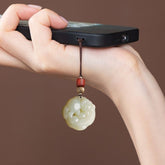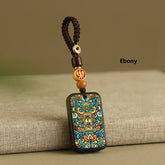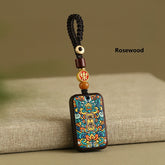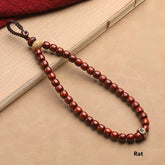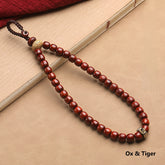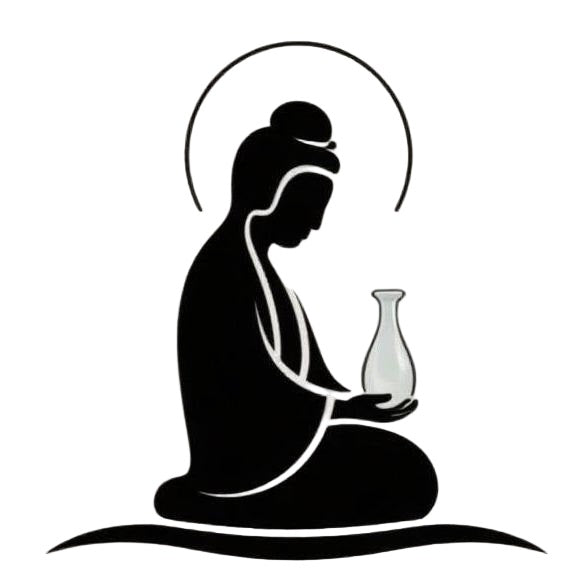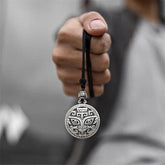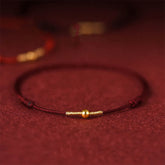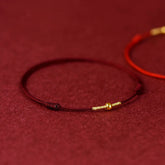Chinese Symbols and Meanings: Ultimate Guide to Auspicious Signs
The rich tapestry of Chinese symbols and meanings represents one of the world's oldest continuous cultural traditions, offering profound insights into Chinese philosophy, values, and spiritual practices. These ancient auspicious symbols permeate every aspect of Chinese life—from architecture and art to daily conversations and celebrations—serving as visual representations of deep cultural wisdom. Understanding these Chinese symbols and meanings provides not only aesthetic appreciation but also practical benefits for enhancing luck, prosperity, and harmony in accordance with traditional beliefs.
For centuries, these powerful emblems have guided countless generations in navigating life's challenges while maintaining connection to cultural heritage. This comprehensive guide explores the most significant Chinese symbols and meanings, examining their historical origins, cultural contexts, and contemporary applications. Whether you're drawn to calligraphic characters, mythological creatures, or natural motifs, you'll discover how these timeless lucky symbols continue to offer wisdom and inspiration in our modern world.
The Cultural Foundation of Chinese Symbolism
The Philosophy Behind the Symbols
Chinese symbolism draws from multiple philosophical traditions that have shaped Chinese thought for millennia. Confucianism emphasizes social harmony and familial duty, Taoism focuses on natural balance and flow, while Buddhism introduces concepts of karma and enlightenment. These interconnected philosophies create a rich symbolic language where Chinese symbols and meanings often operate on multiple levels simultaneously.
The concept of qi (life force energy) underpins many auspicious symbols, with certain forms believed to attract positive energy while deflecting negative influences. Similarly, the balance of yin and yang—complementary opposites that form a unified whole—appears repeatedly throughout Chinese symbolic language, reminding us of the natural balance inherent in all things.
The Role of Symbolism in Daily Life
In Chinese culture, Chinese symbols and meanings are not merely decorative but functional, serving specific purposes in different contexts:
-
New Year celebrations feature specific symbols to ensure prosperity
-
Wedding ceremonies incorporate symbols for marital happiness
-
Business openings display symbols for success and growth
-
Home design integrates symbols for protection and harmony
This practical application demonstrates how Chinese symbols and meanings remain living traditions rather than historical artifacts.
Auspicious Chinese Characters and Their Meanings
Fu (福) - Blessings and Good Fortune
The Fu character stands as perhaps the most recognizable of all Chinese symbols and meanings related to good fortune. Typically displayed on doors during Chinese New Year, this character represents the arrival of happiness, prosperity, and good luck. The custom of hanging the Fu character upside down plays on a linguistic pun—"upside down Fu" sounds identical to "Fu arrives" in Chinese.
The Fu character's significance includes:
-
Comprehensive blessings covering health, wealth, and relationships
-
Imperial connection as it was used in palace decorations
-
Spiritual protection against negative influences
Displaying the Fu character in your home or workplace, particularly during important transitions, helps attract positive energy according to traditional beliefs.
Shou (寿) - Longevity and Health
The Longevity character Shou represents one of the most cherished Chinese symbols and meanings in a culture that highly values extended life and good health. This elegant character frequently appears on birthday decorations, particularly for elder family members, and is often incorporated into jewelry and artwork as a blessing for long life.
The Shou character embodies multiple aspects of longevity:
-
Physical health and vitality
-
Mental acuity in advanced age
-
Spiritual fulfillment through a life well-lived
According to the Palace Museum's research on imperial symbols, the Shou character appeared more frequently than any other character in the Forbidden City, reflecting its importance in Chinese culture.
Xi (囍) - Double Happiness and Marriage
The Double Happiness symbol consists of two identical Xi characters side by side, representing joy and marital bliss. This distinctive symbol dominates Chinese wedding imagery, appearing on invitations, decorations, and gifts to bless the union with double portions of happiness.
The Double Happiness symbol signifies:
-
Harmonious partnership between husband and wife
-
Union of families through marriage
-
Shared joy that multiplies through relationship
Placing the Double Happiness symbol in the relationship area of your home (southwest according to Feng Shui principles) supports romantic relationships and marital harmony.
Animal Symbols in Chinese Culture
The Dragon: Imperial Power and Good Fortune
The legendary dragon represents one of the most powerful Chinese symbols and meanings, embodying strength, wisdom, and good luck. Unlike Western dragons often depicted as threatening creatures, Chinese dragons are benevolent beings associated with rainfall, rivers, and celestial power. As the highest-ranking animal in Chinese mythology, the dragon symbolized imperial authority for centuries.
The dragon's symbolic attributes include:
-
Yang energy and active principle
-
Transformation and adaptability
-
Divine protection and blessing
Displaying dragon imagery in the east sector of your home or workplace enhances career success and personal growth according to Feng Shui principles.
The Phoenix: Renewal and Grace
The mythical phoenix (Fenghuang) complements the dragon as a symbol of the empress and feminine virtue. This magnificent bird represents renewal, grace, and the union of yin and yang when paired with the dragon. The phoenix's appearance traditionally heralds peaceful times and prosperous reigns.
The phoenix embodies several virtues:
-
Beauty without arrogance
-
Resilience through life's challenges
-
Harmonious relationships and family unity
Placing phoenix imagery in the south area of your home enhances recognition and reputation energy.
The Tortoise: Longevity and Stability
The tortoise represents one of the four celestial animals in Chinese symbolism, valued for its long life, endurance, and connection to ancient wisdom. Tortoise symbols frequently appear alongside the Longevity character Shou, reinforcing their association with extended lifespan and stable progress.
The tortoise teaches valuable lessons through its symbolism:
-
Steady progress over hurried action
-
Protection through natural boundaries
-
Connection between heaven and earth
Positioning a tortoise figurine in the north sector of your home supports career stability and long-term goals.
Natural Elements as Chinese Symbols
Bamboo: Resilience and Integrity
Bamboo represents one of the most beloved natural Chinese symbols and meanings, admired for its flexibility, strength, and rapid growth. This "gentleman of plants" (as described in Confucian texts) bends without breaking in the strongest winds, teaching the value of resilience combined with integrity.
Bamboo's symbolic meanings include:
-
Adaptability without compromising core values
-
Continuous growth and self-improvement
-
Elegant simplicity and natural beauty
Incorporating bamboo elements into your living space—whether through live plants, artwork, or decorative objects—encourages graceful adaptation to life's changes while maintaining personal integrity.
Lotus: Purity and Enlightenment
The lotus flower grows from muddy waters yet produces immaculate blossoms, making it a powerful symbol of purity, spiritual awakening, and perfection in difficult circumstances. While having Buddhist connotations, the lotus also appears in purely Chinese contexts as representing summer, femininity, and creative power.
The lotus embodies several spiritual principles:
-
Transcendence over challenging environments
-
Gradual unfolding of spiritual understanding
-
Non-attachment despite earthly roots
Lotus imagery in meditation spaces or bedrooms promotes peaceful energy and spiritual contemplation.
Peony: Wealth and Honor
Known as the "king of flowers" in Chinese culture, the peony represents wealth, honor, and romantic affection. For centuries, peonies have been associated with aristocratic elegance and prosperous beginnings, making them popular motifs in artwork celebrating achievement and abundance.
The peony's symbolic associations include:
-
Financial prosperity and material success
-
Feminine beauty and romantic affection
-
Social recognition and honorable reputation
Displaying peony artwork in the wealth area (southeast) of your home or business attracts abundance energy according to Feng Shui principles.
Numerical Symbols in Chinese Culture
Lucky Number 8: Prosperity and Success
The number 8 has become internationally recognized as one of the most significant Chinese symbols and meanings related to prosperity. This association stems from linguistic similarity—the word for "eight" (ba) sounds similar to the word for "wealth" or "prosper" (fa) in Cantonese and some other Chinese dialects.
The number 8's symbolic power appears in:
-
Business openings scheduled on dates containing multiple eights
-
Pricing strategies incorporating the number eight
-
Address selection favoring buildings with eight in the number
Incorporating the number eight into important aspects of your life—from phone numbers to addresses—harnesses this symbolic connection to abundance.
Number 9: Eternity and Imperial Power
The number 9 represents longevity and eternity in Chinese symbolism, as its pronunciation resembles the word for "long-lasting." As the largest single digit, nine also carried imperial significance, with the Forbidden City famously containing 9,999 rooms.
The number 9 appears in significant contexts:
-
Wedding traditions involving gifts in multiples of nine
-
Imperial architecture incorporating nines in design elements
-
Birthday celebrations for milestone ages
Using the number nine in meaningful ways connects to these traditions of endurance and completeness.
Practical Applications of Chinese Symbols
Incorporating Symbols in Home Design
Understanding Chinese symbols and meanings allows you to create harmonious living spaces that support specific intentions:
-
Entryway: Place Fu symbols or protective animals like lions to filter incoming energy
-
Living Room: Display family-oriented symbols like the Double Happiness or phoenix for harmonious relationships
-
Home Office: Incorporate dragon or bamboo imagery to support career growth and resilience
-
Bedroom: Use lotus or peony motifs to encourage peace and romantic connection
Strategic placement amplifies both the aesthetic and energetic benefits of these traditional symbols.
Using Symbols in Personal Accessories
Wearing jewelry or carrying accessories featuring Chinese symbols and meanings keeps their protective and auspicious energies with you throughout the day:
-
Jade pendants with Shou characters for health and longevity
-
Red bracelets with Fu charms for general protection and blessing
-
Gold jewelry with dragon motifs for confidence and success
-
Silk accessories with peony patterns for recognition and honor
Choosing materials traditionally associated with each symbol enhances their effectiveness according to Chinese cultural beliefs.
Gift-Giving with Symbolic Meaning
Selecting gifts featuring appropriate Chinese symbols and meanings adds layers of significance to your presentations:
-
Newlyweds: Gifts with Double Happiness symbols for marital bliss
-
Business partners: Artwork with dragon or number eight motifs for success
-
Elder relatives: Items with Shou characters or tortoise imagery for longevity
-
Students: Bamboo or dragon items for growth and achievement
Understanding the symbolic language allows you to communicate specific blessings through your gift choices.
The Continuing Relevance of Chinese Symbols
Cultural Preservation and Evolution
While deeply rooted in tradition, Chinese symbols and meanings continue to evolve, adopting new interpretations while maintaining core significance. Contemporary artists reimagine traditional motifs in modern contexts, and global appreciation has introduced these symbols to worldwide audiences who find personal resonance with their universal themes.
The digital age has further transformed how we engage with these symbols, from emoji incorporating Chinese motifs to virtual red envelopes during digital celebrations. This adaptability ensures that Chinese symbols and meanings remain living traditions rather than historical artifacts.
Personal Connection and Interpretation
While understanding traditional Chinese symbols and meanings provides important cultural context, your personal relationship with these symbols ultimately determines their significance in your life. A symbol that resonates deeply with your personal experiences and aspirations carries more power than one selected solely for its traditional meaning.
Allow yourself to develop intuitive connections with these symbols, noticing which ones naturally attract you and how their meanings might apply to your current life circumstances. This personalized approach honors both cultural tradition and individual spiritual journey.
Conclusion: Living with Chinese Symbols
The profound world of Chinese symbols and meanings offers timeless wisdom for enhancing our modern lives. These ancient auspicious symbols serve as bridges connecting us to cultural wisdom, natural cycles, and spiritual principles that have guided countless generations. By understanding their historical context, cultural significance, and practical applications, we can incorporate their power into our daily lives in meaningful ways.
At Fengshui&Buddha, we honor this rich symbolic tradition through carefully curated items that embody these powerful Chinese symbols and meanings. Each piece serves as both beautiful object and meaningful connection to cultural heritage, helping create environments where tradition and contemporary life harmoniously coexist. May these auspicious symbols bring increased awareness, harmony, and blessing to your journey.


